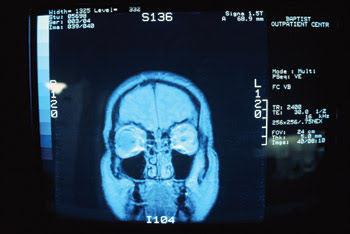Radiology takes a digital approach to processing and displaying high volumes of data in real time.
Pierantonio Boriero, Matrox Imaging
Companies that develop systems for medical imaging are motivated not only by the demand by hospitals for faster results at lower cost, but also by new imaging technologies. Radiology, like many branches of medical imaging, is going digital, and it’s bringing many benefits with it.
Traditional x-rays rely on film. Once the image is taken, the film is processed and sent back to the doctor for diagnosis. Producing x-rays is a time-consuming procedure that becomes even longer and more expensive if multiple x-rays are needed — for example, because the patient moved.

State-of-the art medical imaging transfers data in real time.
Today, both still-image radiology and fluoroscopy make use of amorphous flat panels, which offer very high resolutions (typically 1k × 1k and greater) with 10, 12 or 14 bits per pixel. Because a digital x-ray can be displayed almost instantaneously, the technician is able to tell immediately whether the image is useful. Fluoroscopy procedures make use of flat panel technology and live-video feeds, where capturing every frame is crucial.
The minimum required performance for fluoroscopy systems is on the order of 1k × 1k ×12 bits at 30 frames per second, creating 60 MB/s that must be captured, processed and displayed in real time. With panel sizes increasing to even greater than 2k × 2k, only high-performance imaging hardware, such as frame grabbers, can comfortably handle this kind of data output and transfer it to the PC for processing and display in real time. In fluoroscopy, medical imaging companies typically want to grab and process 2k × 2k × 12 bits at 30 fps, or 240 MB/s. Such a volume of data can be handled only by the PCI-X bus, the high-throughput enhancement to the conventional peripheral component interconnect (PCI) bus.
The processing of medical images for display and diagnosis is relatively uncomplicated compared with machine vision. Typical processing includes image enhancement such as filtering and noise reduction, but doing this on very large, high-resolution images presents challenges to the developer.
Many long-term benefits are associated with installing digital systems. Digital imaging reduces the time and the equipment and processing costs associated with film. Hospitals have found that productivity increases after integrating digital image management systems: Doctors can review more cases per day, and patients spend less time waiting for procedures and results. Thus, advances in imaging technology have been of value throughout the industry.
Meet the author
Pierantonio Boriero is product line manager at Matrox Imaging in Dorval, Quebec, Canada.